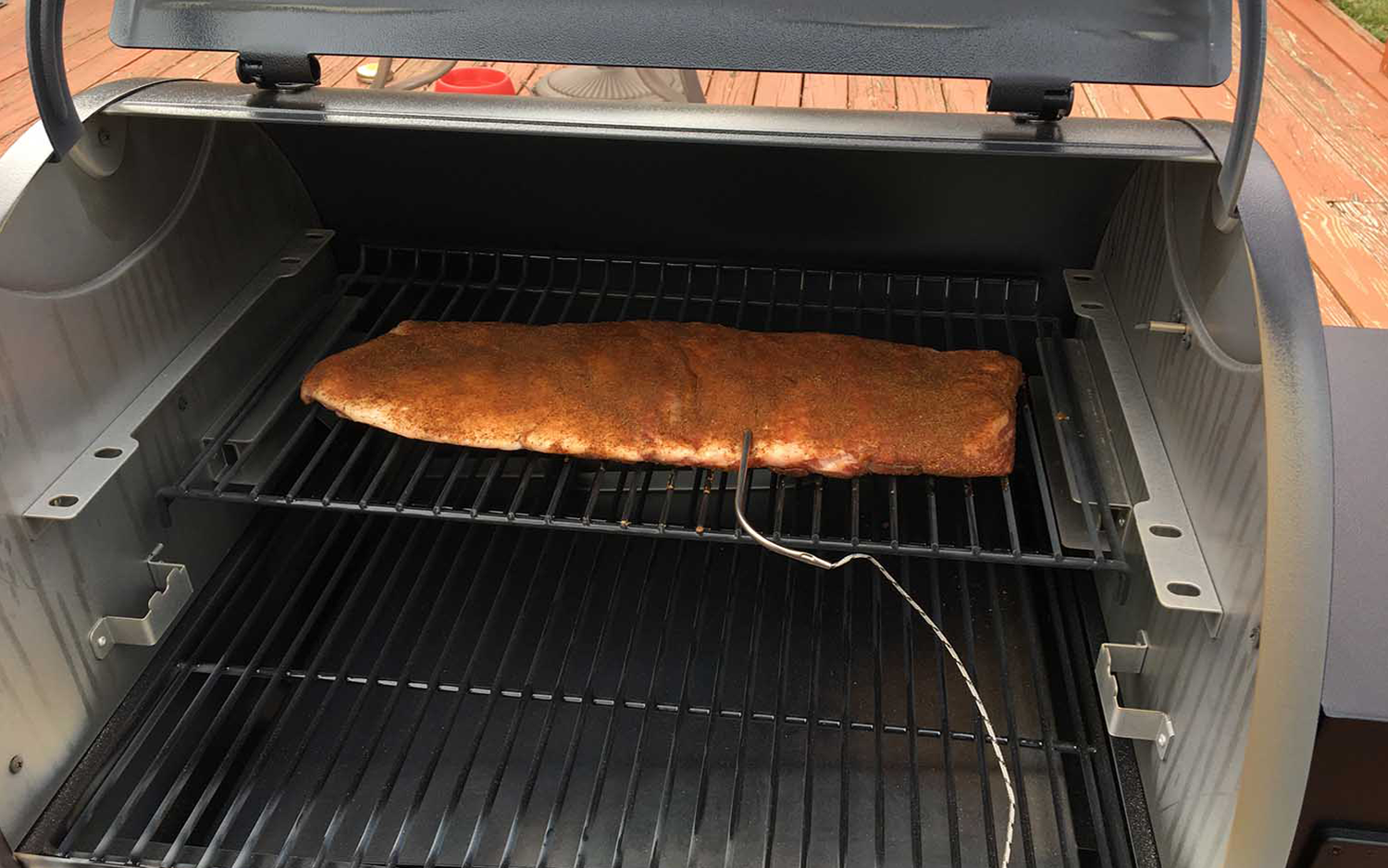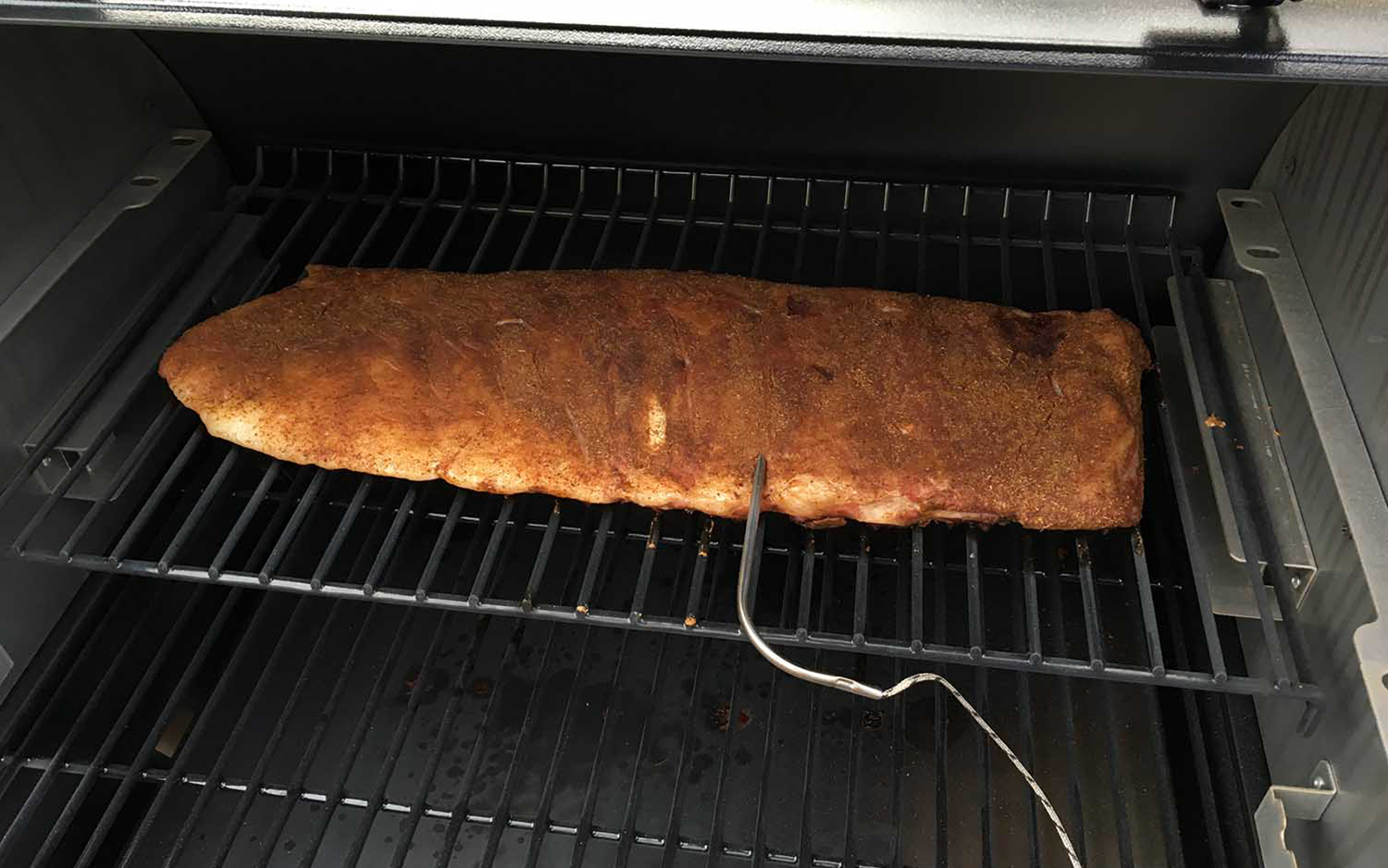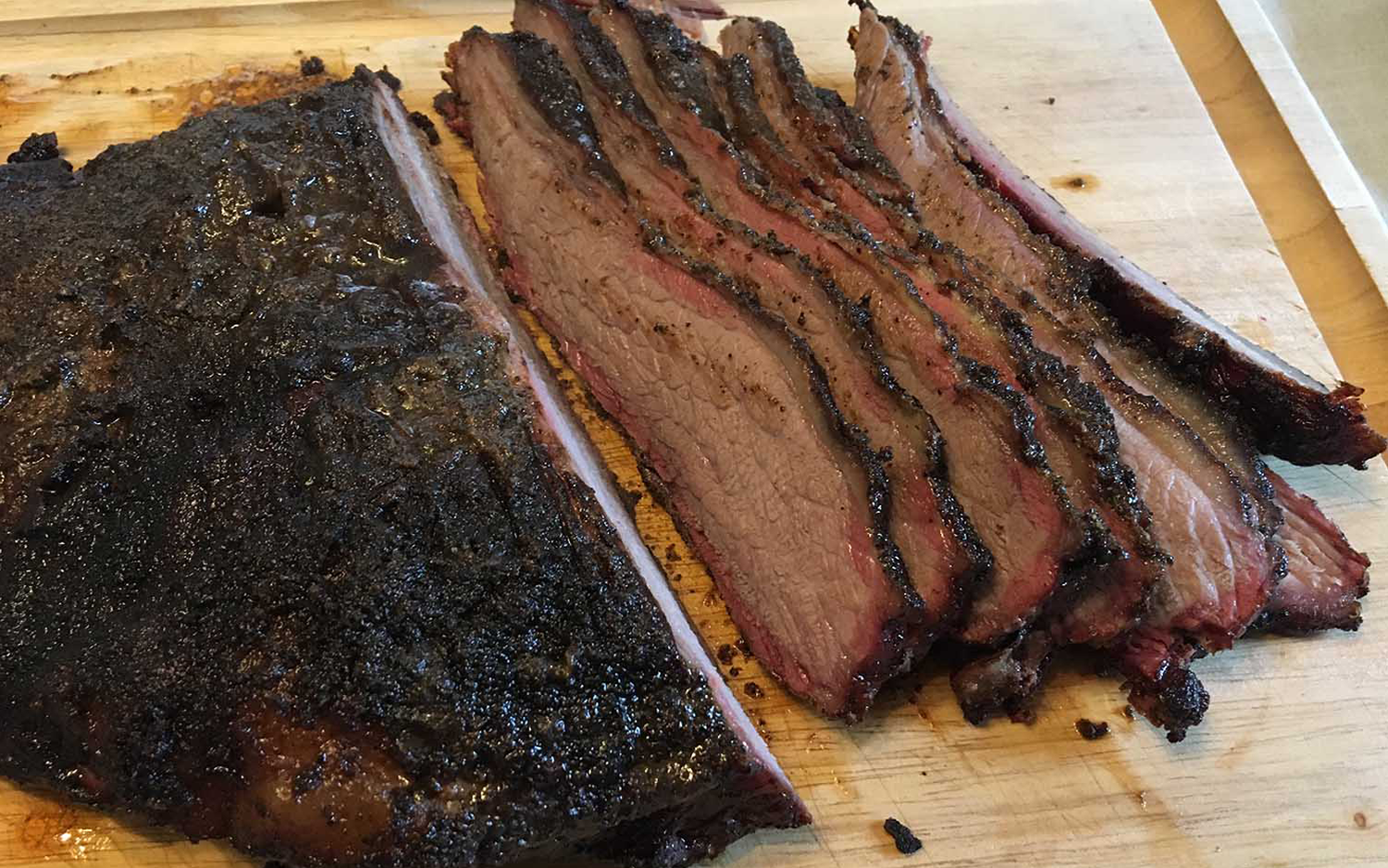Tom's Guide Verdict
Get the Traeger Ironwood 650 if you like gadgets as much as you like barbecue.
Pros
- +
Easy to use
- +
Helpful app
- +
Maintains a steady temperature
- +
Well built
Cons
- -
Expensive
- -
Can’t view cook history in app
- -
Hard to clean out fire pot
Why you can trust Tom's Guide
Design
Traeger's grills have a barrel design with a square hopper on the right side; the hopper is where you dump the wood pellets that give your meat all that wonderful smoky flavor. At the bottom of the hopper is a motor-powered auger that feeds the pellets into the grill’s fire chamber, which, combined with a fan, circulates the smoke and helps regulate the temperature.
Also built into the hopper is the grill's control unit, which consists of a bright LCD screen, a dial, a few buttons and an input for a food probe. Through this panel, you can adjust the temperature of the grill and more.
The Traeger's interface is a lot easier to use than the BBQ Guru's CyberQ Cloud control unit, which has a much smaller display and a less intuitive navigation.
The curved door of the grill has a band of insulation along the bottom edge, but not its sides or top. As a result, a fine layer of ash settled not just on the sides of the grill by the door, but on the tray on the left side. I think Traeger could spring for a little more insulation.

I noticed that two thin wires running from the control box to the temperature sensor inside the grill were exposed in one hard-to-reach section; I could see this being a real pain to fix.
App
Get instant access to breaking news, the hottest reviews, great deals and helpful tips.
Compared with CyberQ Cloud's web interface, Traeger's app (for Android and iOS) is far easier to use and much more refined. But there's still room for improvement.
The app's home screen gives you a quick look at the temperature of the grill, the meat probe and a timer (if you’ve set one). There are also links to recipes and tips and tricks.

The main grill control page has three large circles: Grill temperature, Probe temperature and Timer. The temperature circles show the current and the target temperatures, and tapping on a circle lets you adjust them. The changes were sent almost instantly to the grill itself.
You can't turn the grill on from the app itself, which is a reasonable safety measure, but if you open a recipe in the app, it will send the appropriate settings to the grill. From there, all you have to do is press the red ignite button on the grill.

However, there are a few features in the CyberQ Cloud's interface I wish Traeger would copy. For one, it would be nice to see a chart showing the rise in temperature of the meat and smoker over time. Also, while the recipes and photography in the Traeger app are great, I wish there was a way to share recipes with other grill owners.
Performance: Smokin'!
To test the Ironwood 650, I cooked three different types of meat: ribs, chicken and brisket.
I bought a rack of St. Louis-style ribs, put a basic dry rub of salt, cumin, paprika and pepper on them the night before, and, during the smoking process, basted them once or twice with some barbecue sauce. I set the grill's temperature to 230 degrees and inserted a probe into the ribs. About 4 hours later, I had a nice, tender rack of lip-smacking ribs.
As it has a fan built in, Traeger's grill can also act as a convection oven. For another meal, I baked two sweet potatoes wrapped in foil, along with two buttermilk-brined bone-in chicken breasts. I set the grill's temperature to 500 degrees, and baked the potatoes for about an hour and the chicken breasts until their internal temperature hit 160 degrees. The skin on the top of the chicken was nice and crispy, while the meat itself stayed moist.

Last, I smoked a 4-pound brisket for about 10 hours at 225 degrees. This came out a bit dry, as I had purchased a flat cut rather than one with the point. However, it was plenty tasty, as my dinner guests would attest.
One thing to note for would-be owners: When I smoked the brisket, I placed a small water pan beneath it; this made it much harder for the grill to maintain a consistent temperature.
Because the Traeger can get up to 500 degrees, you can use it for things such as searing steaks and cooking burgers, but it takes a longer time than if you were using a traditional direct-flame grill. On a 60-degree day, it took 45 minutes for the grill’s internal temperature to rise to 500 degrees from 75 degrees. However, the burgers I cooked came out juicy and had those nice grill marks, too.

Still, this is one area where a Kamado-style grill, such as the Big Green Egg, has an advantage, as it can be used for both direct and indirect grilling, and can get much hotter.
Pellet costs
Rather than using charcoal and wood chips, as with smokers like the Big Green Egg, Traeger's grills use wood pellets, which is both more convenient and slightly more expensive. It was nice (but a little less romantic) not having to first light the charcoal in a chimney, then add it to the smoker. With Traeger's grills, you simply dump the pellets into the hopper and the grill does the rest.

A 20-pound bag of wood pellets costs $19 at Home Depot; you'll likely use half of that during a 5-hour smoke. By comparison, a 15-pound bag of Royal Oak charcoal costs $13, and a bag of Kingsford Hickory wood chips costs $6; for the same smoke, you'd probably use less than half of each of those bags.
The rate at which the grill uses the pellets largely depends on what you're cooking; smoke stuff at a lower temperature, and you'll use fewer pellets.
MORE: Best Smart Kitchen Gadgets for Home Cooks
The company also recommends cleaning out the ashes from the grill after every 20 hours of smoking by using a vacuum to suck the ashes from the fire pit. This involves removing the bottom grate and the heat shield/drip pan.
Models
Traeger's Ironwood 650 ($1,199) is one of its medium-range products and has an adjustable grate and sidewall insulation. The Ironwood 650 has 650 square inches of grilling space, while the Ironwood 885 ($1,399) has 885 square inches of space.
Traeger's budget line, the Pro Series, starts at $799 for a model with 575 square inches of cooking space, and $999 for a model with 780 square inches of space. These models have a single rack and no side insulation.
MORE: 11 Must-Have Smart Outdoor Gadgets
The top-end line Timberline series (starting at $1,799) has three tiers of grates, a stainless- steel interior with insulation all around, a pellet sensor and a bamboo cutting board. The Timberline 850 is $1,799, while the Timberline 1300 is $1,999.
Bottom Line
While I have a few quibbles with the Traeger Ironwood 650 — mainly relating to its app — this grill makes barbecue almost foolproof. It was a delight being able to simply walk away and know that the unit was smoking meat at a consistent temperature, and that I could check and control it remotely from my phone.

However, you're definitely paying for the connected features. For example, the Camp Chef Woodwind SG 24 ($899) not only has a larger 811 square inches of cooking space but also a separate searing grill that can get up to 900 degrees. In addition, the Camp Chef offers an easier clean-out method for its firebox.
But if you like tech as much as you like barbecue, Traeger's grill will keep you eating high off the hog.
Credit: Tom's Guide

Michael A. Prospero is the U.S. Editor-in-Chief for Tom’s Guide. He oversees all evergreen content and oversees the Homes, Smart Home, and Fitness/Wearables categories for the site. In his spare time, he also tests out the latest drones, electric scooters, and smart home gadgets, such as video doorbells. Before his tenure at Tom's Guide, he was the Reviews Editor for Laptop Magazine, a reporter at Fast Company, the Times of Trenton, and, many eons back, an intern at George magazine. He received his undergraduate degree from Boston College, where he worked on the campus newspaper The Heights, and then attended the Columbia University school of Journalism. When he’s not testing out the latest running watch, electric scooter, or skiing or training for a marathon, he’s probably using the latest sous vide machine, smoker, or pizza oven, to the delight — or chagrin — of his family.

